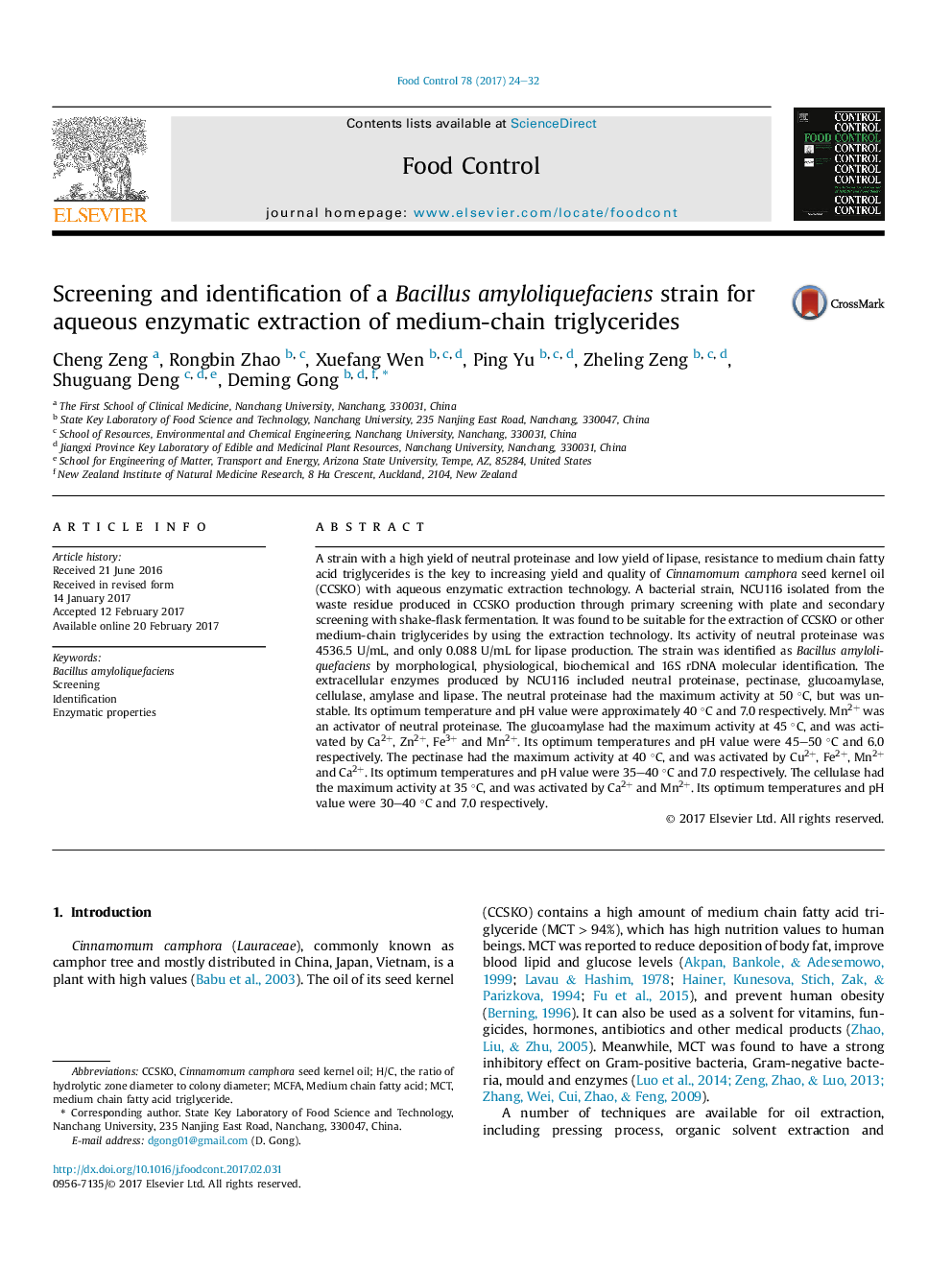| کد مقاله | کد نشریه | سال انتشار | مقاله انگلیسی | نسخه تمام متن |
|---|---|---|---|---|
| 5767483 | 1628386 | 2017 | 9 صفحه PDF | دانلود رایگان |

- A new bacterial strain (NCU116) which can be used for MCT extraction was identified.
- The extracellular enzymes produced by NCU116 included neutral proteinase.
- The biochemical properties of its extracellular enzymes were determined.
A strain with a high yield of neutral proteinase and low yield of lipase, resistance to medium chain fatty acid triglycerides is the key to increasing yield and quality of Cinnamomum camphora seed kernel oil (CCSKO) with aqueous enzymatic extraction technology. A bacterial strain, NCU116 isolated from the waste residue produced in CCSKO production through primary screening with plate and secondary screening with shake-flask fermentation. It was found to be suitable for the extraction of CCSKO or other medium-chain triglycerides by using the extraction technology. Its activity of neutral proteinase was 4536.5 U/mL, and only 0.088 U/mL for lipase production. The strain was identified as Bacillus amyloliquefaciens by morphological, physiological, biochemical and 16S rDNA molecular identification. The extracellular enzymes produced by NCU116 included neutral proteinase, pectinase, glucoamylase, cellulase, amylase and lipase. The neutral proteinase had the maximum activity at 50 °C, but was unstable. Its optimum temperature and pH value were approximately 40 °C and 7.0 respectively. Mn2+ was an activator of neutral proteinase. The glucoamylase had the maximum activity at 45 °C, and was activated by Ca2+, Zn2+, Fe3+ and Mn2+. Its optimum temperatures and pH value were 45-50 °C and 6.0 respectively. The pectinase had the maximum activity at 40 °C, and was activated by Cu2+, Fe2+, Mn2+ and Ca2+. Its optimum temperatures and pH value were 35-40 °C and 7.0 respectively. The cellulase had the maximum activity at 35 °C, and was activated by Ca2+ and Mn2+. Its optimum temperatures and pH value were 30-40 °C and 7.0 respectively.
Journal: Food Control - Volume 78, August 2017, Pages 24-32